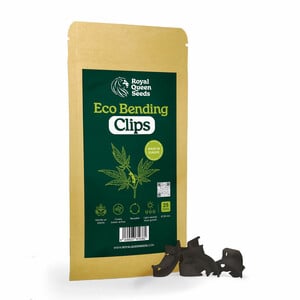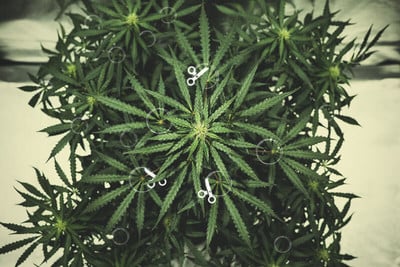Included FREE items

How To Fix Broken And Bent Cannabis Stems
- Growing cannabis step by step
- Cannabis growing basics
- Choosing your seeds
- How to germinate seeds
- The cannabis vegetative stage
- The cannabis flowering stage
- Harvesting cannabis
- Trimming, drying, and curing
- Choosing pots and soil
-
Growing indoors
- A Complete Overview Of Growing Cannabis Indoors
- Cannabis Cultivation Tips: How To Set Up Indoor Grow Lights
- How Many Cannabis Plants Can You Grow Per Square Metre?
- Indoor Cannabis Growing: Relative Humidity and Temperatures
- Hydroponics Cannabis Growing Guide (with diagrams)
- Cannabis Micro Growing: Growing Great Weed in Tiny Spaces
- Growing outdoors
- How to grow autoflowering cannabis
- Cannabis nutrients and pH
- Cannabis troubleshooting: Nutrients
-
Cannabis troubleshooting: Growing
- Cannabis Seed Germination — Troubleshooting Guide
- How to Deal With Pythium (Root Rot) in Cannabis Plants
- Slow Cannabis Plant Growth And What You Can Do About It
- How to Prevent and Fix Stretching in Cannabis Seedlings
- Watering Your Cannabis: How To Fix Over And Underwatering
- Understanding Male, Female, And Hermaphrodite Cannabis
- Identifying and Treating Common Cannabis Ailments
- How To Revive a Sick Cannabis Plant
- How to Avoid Mouldy Weed During Drying and Curing
- How to Prevent and Treat Dry and Crispy Cannabis Leaves
- What Cannabis Leaves Can Tell You
- Yellow Cannabis Leaves
-
Cannabis Strains Grow Report
- HulkBerry Automatic Grow Report
- Blue Cheese Auto Grow Report
- Purple Punch Automatic Grow Report
- Triple G Automatic Grow Report
- Do-Si-Dos Automatic Grow Report
- Green Gelato Automatic Grow Report
- Haze Berry Automatic Grow Report
- Purple Queen Automatic Grow Report
- Cookies Gelato Automatic Grow Report
- Sherbet Queen Automatic Grow Report
- Sweet Skunk Automatic Grow Report
- Medusa F1 Grow Report
- Cannabis plant training
-
Weed growing tips
- The Cannabis Plant Anatomy
- How to preserve seeds
- How Much Sunlight Do Outdoor Cannabis Plants Need To Grow?
- How to Control and Prevent Stretching in Cannabis Plants
- How And When To Transplant Your Cannabis Plants
- My Cannabis Plants Are Growing Too Tall: What Should I Do?
- Should You Worry About Purple Or Red Cannabis Stems?
- What To Do When Your Indoor Cannabis Won’t Flower
- How To Protect Your Cannabis Plants From Heat Stress
- How To Tell If Your Female Cannabis Plant Has Been Pollinated
- Growing Medical Marijuana
- Bud Washing: How to Clean Your Weed
Contents:
- What causes broken or bent stems?
- What kind of damage typically happens to stems?
- How can you fix broken or detached stems?
- How to fix bent stems
- Keep the nutrients flowing
- How can you protect your plants from stem damage?
- High-stress training (hst): intentional stem damage
- Cannabis stems: overlooked but anatomically vital
Broken, bent, or detached stems are common growing problems, especially for first-time growers. They have the potential to seriously endanger your grow and limit your final yield. However, with care and attention, these issues can be fixed quite easily. Even branches that have completely snapped off the plant can be saved by using a few simple methods.
What Causes Broken or Bent Stems?
Stems can be damaged by something as simple as moving plants carelessly. This can especially be a problem with plants that are more rigid and upright. Moreover, damage from wind or excess airflow can similarly damage branches and stems.
Stems and branches can also be broken or bent from the utilisation of growing techniques like low-stress and high-stress training methods. Techniques that bend or otherwise stress branches inherently have the potential to lead to stem complications. Even if branches don’t split or break completely, the damage caused by bending them too much can harm plant vigour and production.
It is important to treat broken or otherwise damaged stems quickly. Open wounds can lead to infections in the plant, similar to humans. These kinds of breaks and open wounds will not only lead to a lower yield, but have the potential to kill the plant altogether.
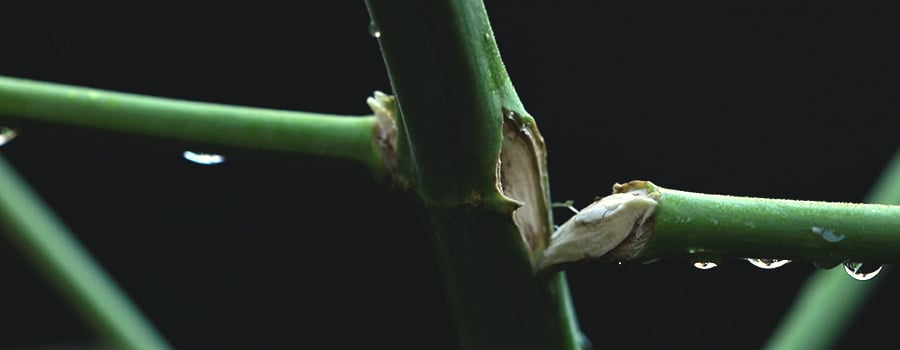
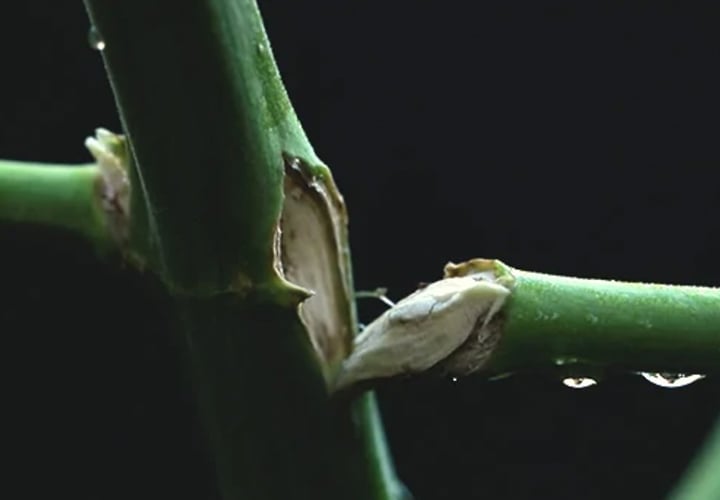
A broken stem doesn’t just mean damage to a structural component of your plant. These appendages also house the vascular system that transports water and nutrients from one place to another. Complex tissues called xylem and phloem make up this network and distribute these vital substances using a combination of root pressure and transpiration pull.
Can a broken plant stem still heal? Yes! If the stem of a plant is bent or snapped, it’s important to mend it as quickly as possible to allow nutrients and water to continue flowing. Delaying a repair will cut the broken end off from sustenance and reduce the chances of healing taking place.
What Kind Of Damage Typically Happens To Stems?
The three most common types of stem damage are broken or split stems, bent or folded stems, and detached stems.
-
Broken Stems
When training rigid plants, or when training during the flowering phase, plants are at an added risk for broken stems. If left untreated, the branches of these stems will stop growing. These stems can be easily fixed with the tape method or with a support structure. Plants have a natural healing mechanism that will allow them to mend themselves. However, if you act quick enough, you may not even notice a reduction in the plant’s production on these branches.
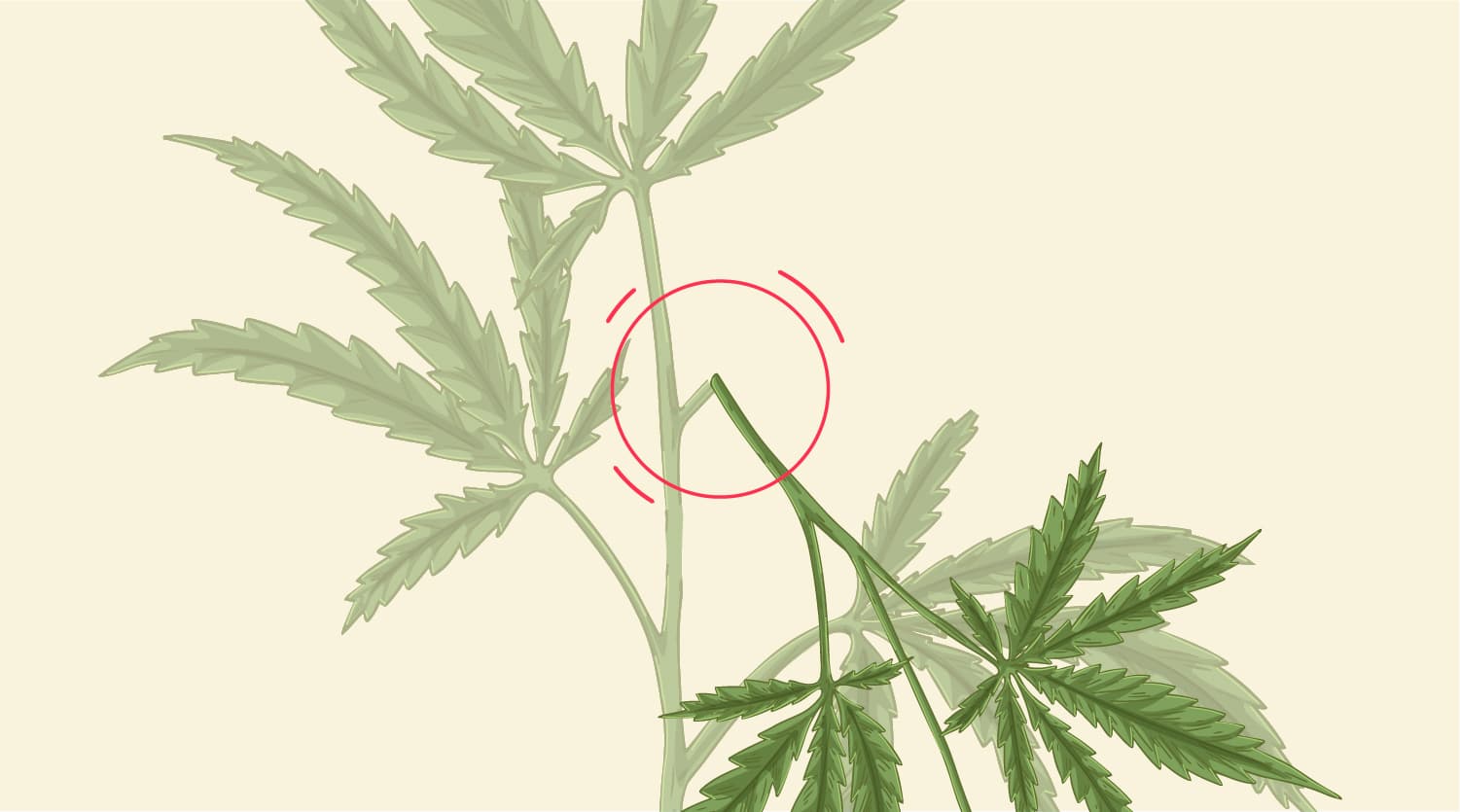
-
Bent/folded Stems
This is the most common type of stem damage that occurs. When branches are bent or stressed too much by training techniques, permanent damage can occur. Bent or folded stems are unable to support themselves. Bends or folds can make it more difficult for branches to receive water and nutrients from the plant. These stems will continue to grow, but at a slower pace than the rest of the plant. This is not just because they are bent, but because their bending makes them hang lower, potentially blocking their exposure to light.
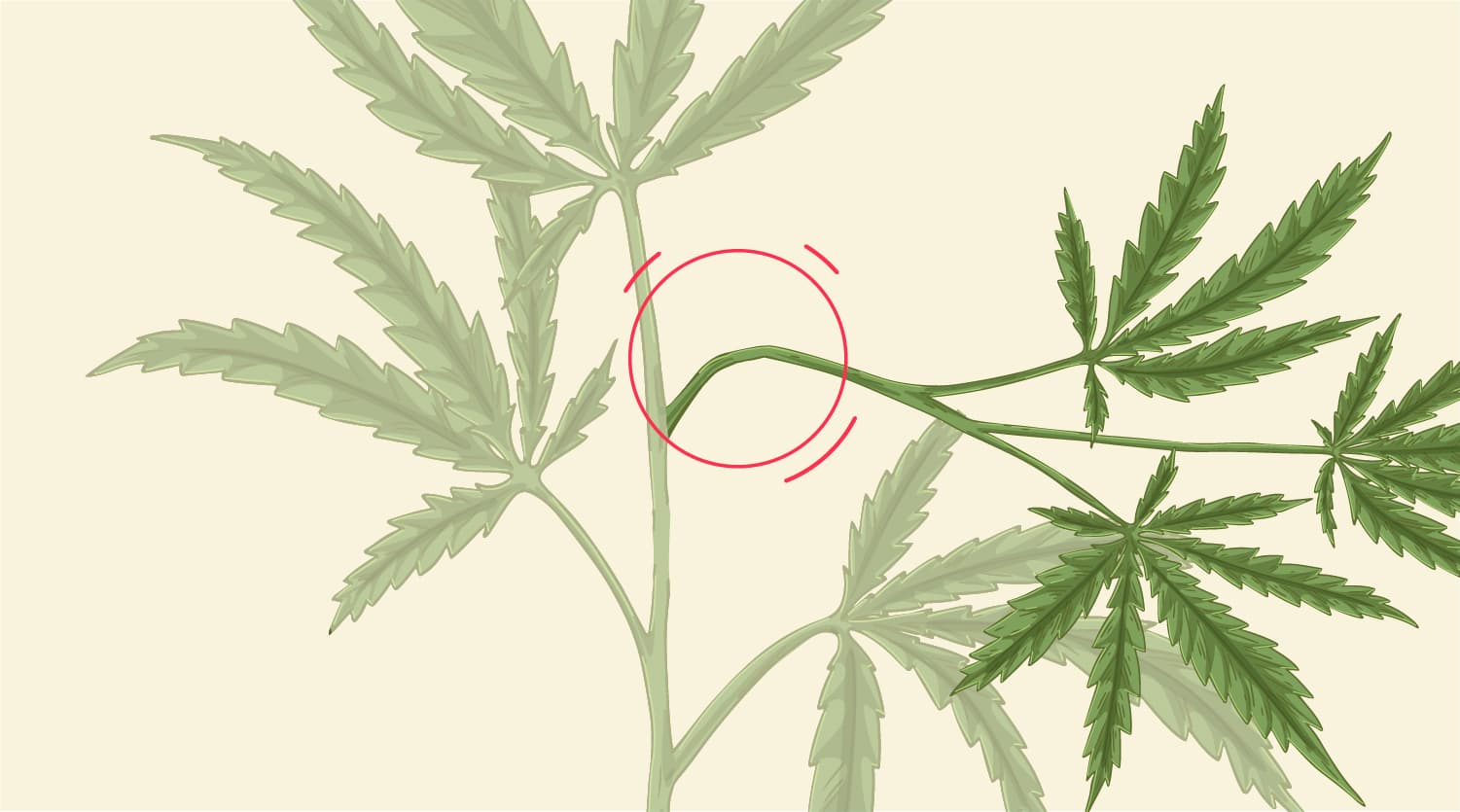
-
Detached Stems
Branches that have completely snapped off and detached themselves from the plant can be one of the most stressful problems to deal with. Luckily, these detached stems can be healed and mended with the same techniques used for other kinds of stem damage. They simply require more care and attention than bent or broken stems. However, if the detached stem is small, or located towards the bottom of the plant, it may be best to simply toss it away and cut your losses.

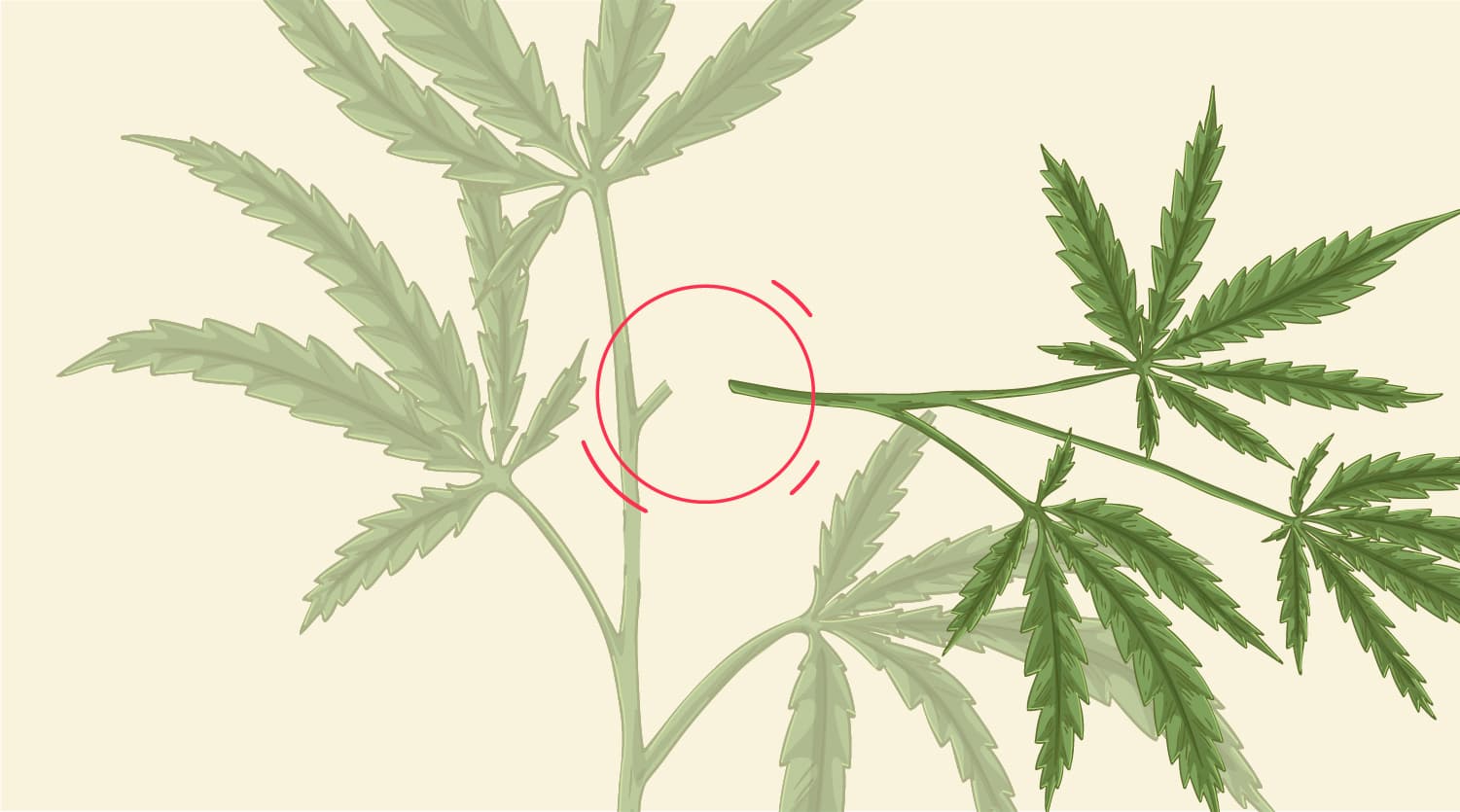
How Can You Fix Broken or Detached Stems?
The most common method of fixing broken stems is to use the tape method. Both duct tape and scotch tape can be used to help plants heal. Which kind you use will depend on the extent of the damage and the weight of the branch being mended.
Follow these steps to fix your broken stems:
- Prepare a piece of tape about 10cm in length (you may need more for larger stems/branches).
- Wrap the tape around the broken stem, making sure it fully covers its original base.
- Ensure that the stem and its base are packed together tightly to allow mending.
- Leave the tape on for between 2–4 weeks.
- Check healing progress every day.
Tip: Instead of using tape alone, use a splint to offset the load from the injured branch. Tape a piece of wood or a pencil parallel to the break. Make sure you wrap the tape around the broken site with appropriate tightness. Wrapping it too loose will cause the broken ends to slip out of union. Wrapping it too tight will further damage the vegetative tissue. When it comes to removing the tape, do so with care to avoid further damage. If the tissue hasn't healed yet, you can easily create a tear if you’re too heavy-handed.
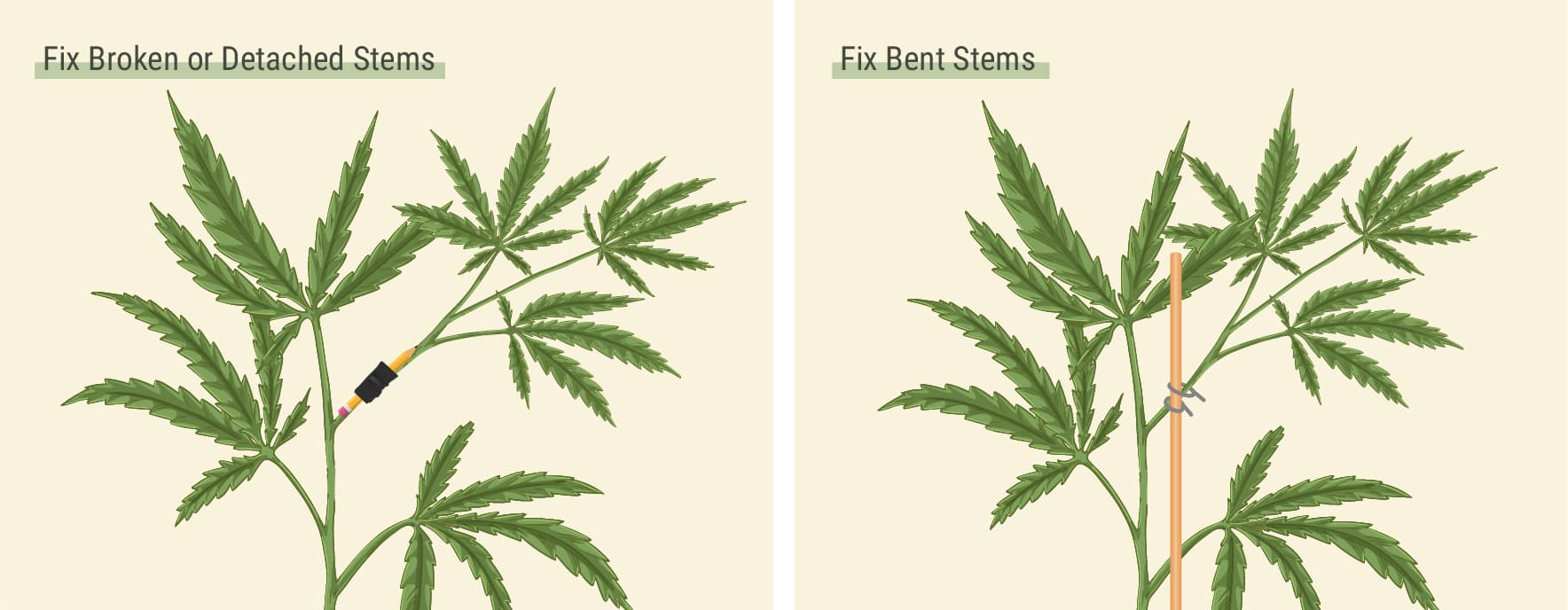
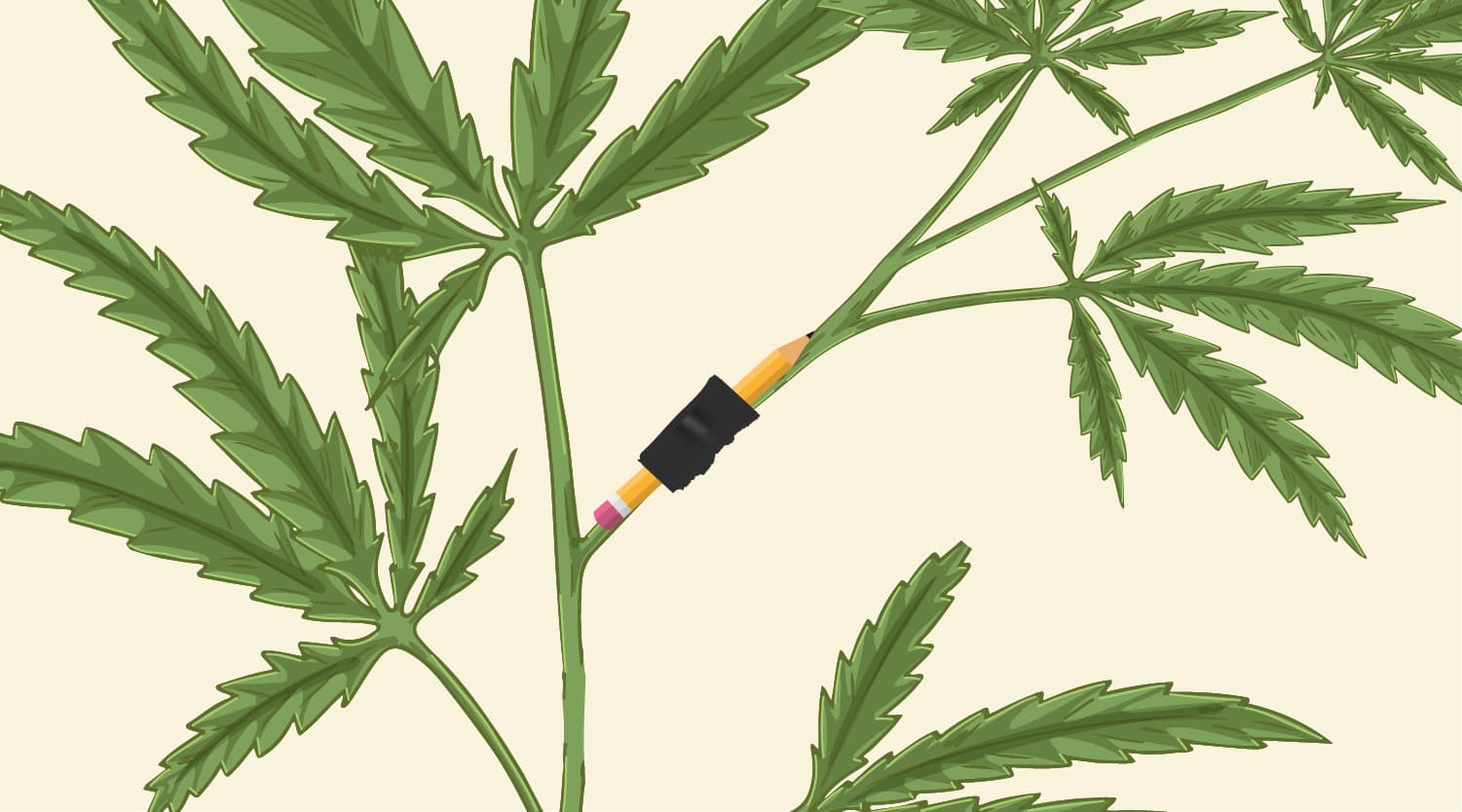
How To Fix Bent Stems
You can also use external supports to protect the injured site from the pull of gravity. After taping the break, follow the steps below to offload your broken branch.
- Select a structure: There are plenty of structures to choose from, including a small plastic or metal trellis or simple bamboo stakes inserted into the soil.
- Tie your plant: Use soft garden ties to gently bind the broken branch to the supporting structure. Apply one tie just before the break, and another one past the break to support the injury from both sides.
- Add some stress: Remove the ties a few days before you plan to remove the tape. Giving your plant some time to adapt to the force of gravity will prepare the broken tissues for the initial shock.
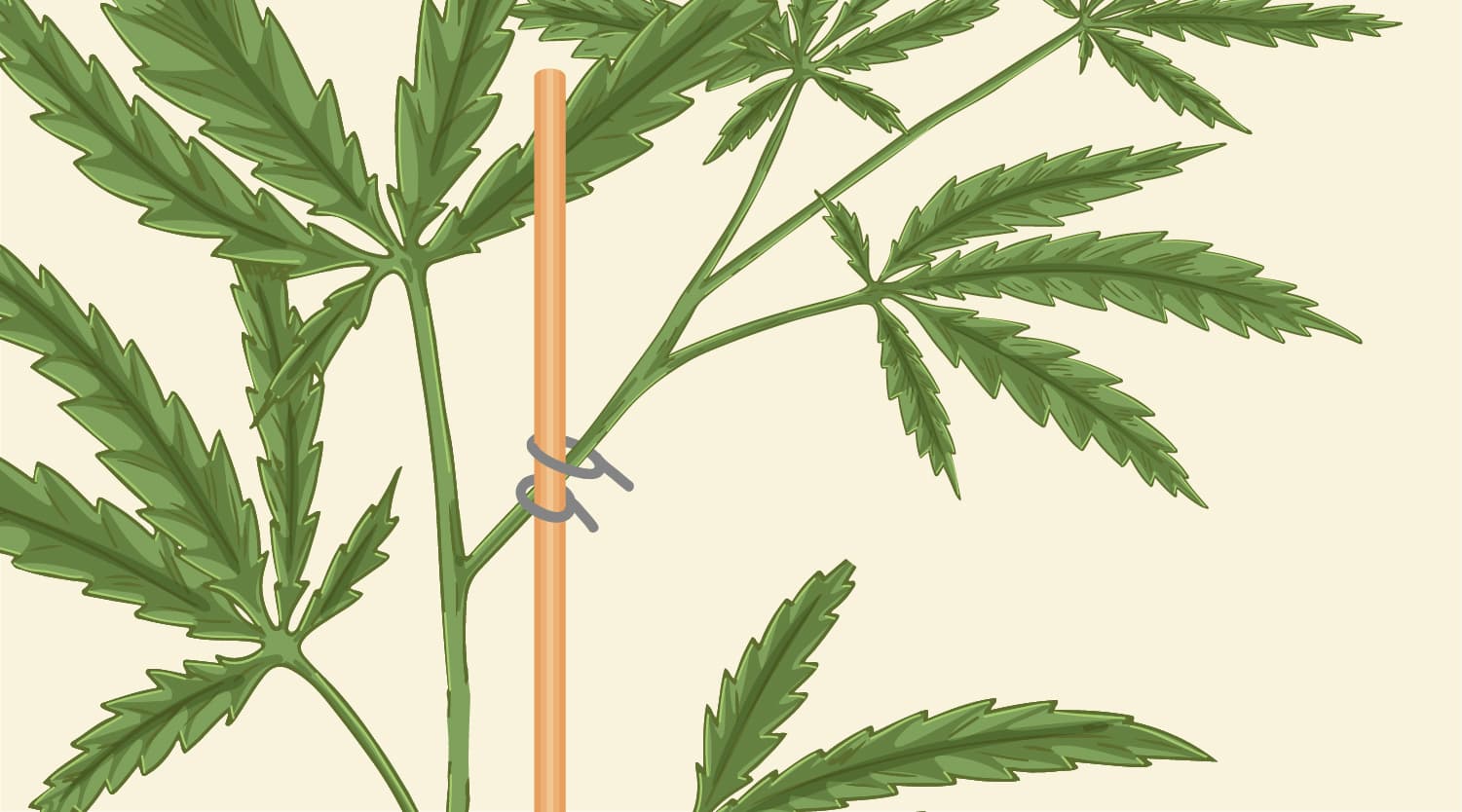
Why not use this opportunity to train and reshape your plant while it heals? Using Royal Queen Seeds bending clips won’t just reinforce the break, but it’ll help you achieve a better shape. Before you proceed, we don’t recommend bending stems on plants that are flowering. You can get away with it during the first two weeks of bloom, but past this point, it’s best not to disrupt the flowering process any further.
- Apply the training clip and bend your plant in the desired direction.
- Reinforce the training clip with tape to keep it secure and support the break.
- Remove the tape 2–4 weeks later and leave the clip in place.
Keep the Nutrients Flowing
Your plants need nutrients now more than ever. Most of the minerals in your fertiliser of choice play an important role in photosynthesis, enzymatic reactions, and protein building. Stay consistent with your regular feeding schedule during this time. We also recommend treating your plant with a natural fertiliser that will slowly break down over the healing period. Top-dress with worm castings or bat guano, or drench those roots with a microbe-rich compost tea.
How Can You Protect Your Plants From Stem Damage?
The main way to protect your plants from stem damage is to be careful when handling them, especially when moving your plants, or when utilising training techniques that stress stems or branches. When training your plants and bending your branches, be careful not to overdo it. Plants with rigid stems and structures are especially susceptible to damage. Although it can be easily fixed, it is best to take proper care so as to avoid an issue in the first place.
It is advisable to take proper precautions to protect your plants from excessive wind or airflow damage. Moving air can provide numerous benefits for cannabis plants, including making the stems stronger. However, too much of it can cause significant structural damage, affecting health and yield in kind. In strong enough winds, plants can be toppled over or completely uprooted.
Reinforcing and protecting plants against the wind is simple and inexpensive. It is usually inadvisable to rigidly secure cannabis as this will completely prevent motion. It is much better to keep your plants next to some form of windbreaker. Rows of hedges or trees can act as natural defences. Meanwhile, fences and walls can act as man-made barriers. Bamboo matting, shade cloth, and plastic film can also make for suitable windbreakers. Some growers also prefer to use mesh fences that surround the plants. These fences can then be layered with cloth or plastic to ensure they act as effective barriers.
Trellising will protect your plants against adverse weather and the occasional knocks that typically snap cannabis branches. Cylindrical trellises, such as tomato cages, work great in both containers and raised beds, offering sturdy lateral support.
ScrOG utilises horizontal trellising. Although the main goal of the technique is to shape plants, the screen also offers structural support. As well as helping to prevent breaks, trellising still allows for adequate airflow, which aids in fending off fungal pathogens.
High-Stress Training (HST): Intentional Stem Damage
High-stress training (HST) techniques actually call for intentional damage of cannabis stems. While this concept might leave you aghast, these techniques are effective at bolstering yields. Check them out below:
| Super cropping | This technique involves pinching stems, breaking their internal vasculature, and taking advantage of their post-injury floppiness to change their direction of growth. It seems brutal, but it allows growers to shape canopies in any way they see fit |
| Splitting stems | Taking a sharp knife to your cannabis branches seems like a terrible idea, but many growers report better results after vertically slicing through the main stem |
| Topping/fimming | Both of these techniques involve lopping off (some or all of) the main growing tip in order to produce more uniform canopies and increased bud sites |
| Super cropping | This technique involves pinching stems, breaking their internal vasculature, and taking advantage of their post-injury floppiness to change their direction of growth. It seems brutal, but it allows growers to shape canopies in any way they see fit |
| Splitting stems | Taking a sharp knife to your cannabis branches seems like a terrible idea, but many growers report better results after vertically slicing through the main stem |
| Topping/ fimming |
Both of these techniques involve lopping off (some or all of) the main growing tip in order to produce more uniform canopies and increased bud sites |
-
How Does LST Compare?
Low-stress training takes a gentler approach. Instead of cutting, pinching, and snipping, LST involves gently diverting the growth of branches using soft ties and plant clips. The end result? More lateral growth, improved canopy structure, and more even light distribution.
Cannabis Stems: Overlooked But Anatomically Vital
While we fawn over big buds and luscious fan leaves, we take cannabis stems for granted. Until they break! These sturdy green appendages provide structure to plants, but they also house the complex vascular tissues that ferry nutrients and water around our crops. By using myriad training techniques, you can take control of your stems, shape them to your preferences, and enjoy heavier and more bountiful yields.


























